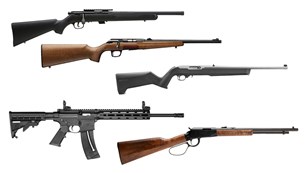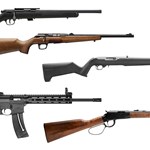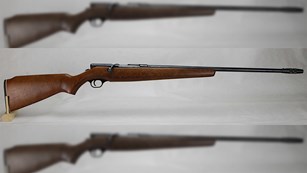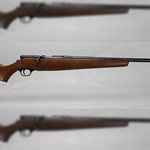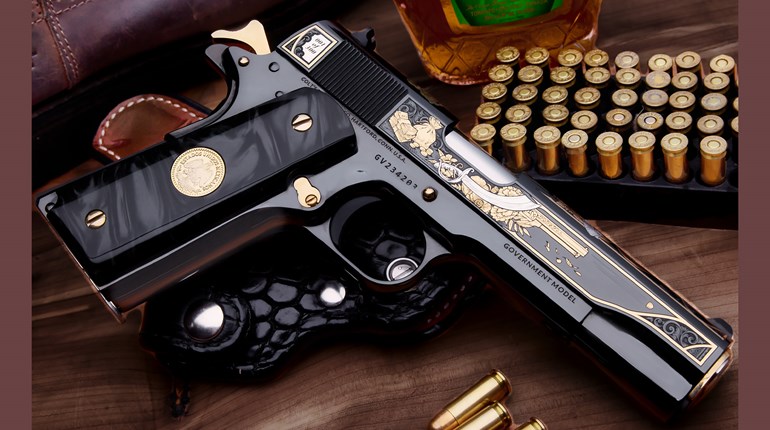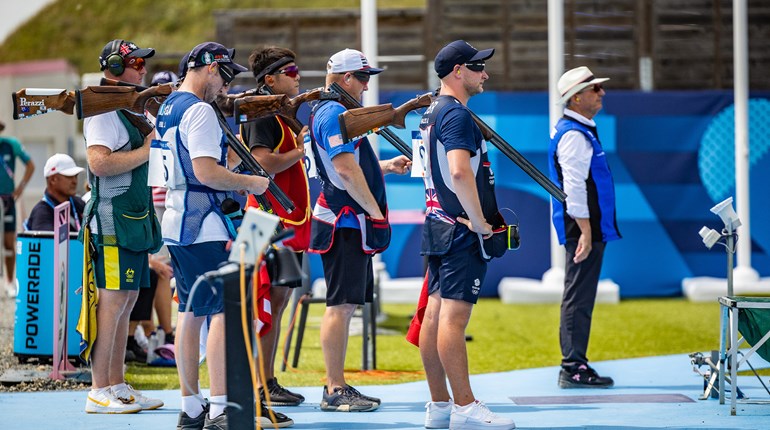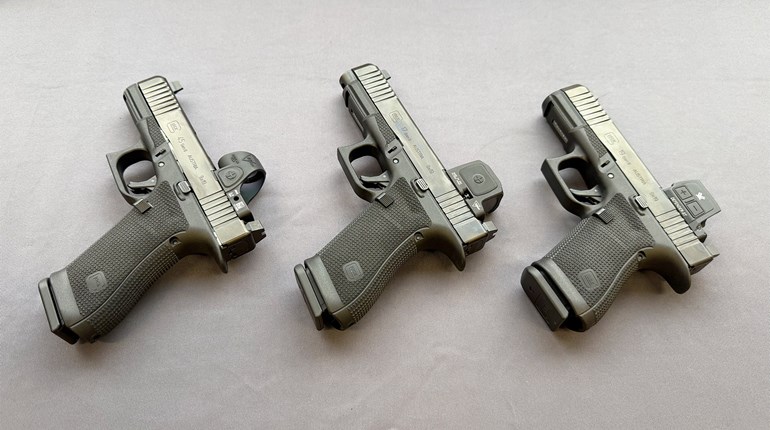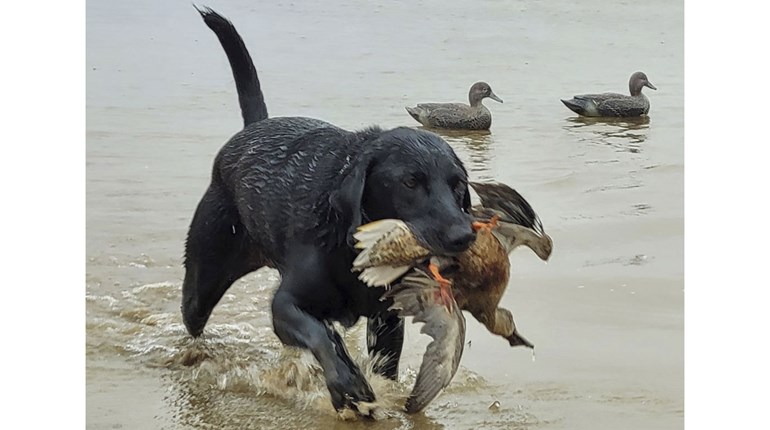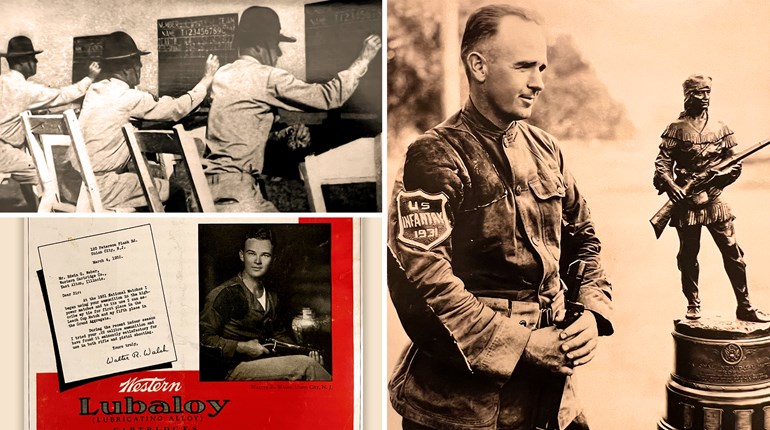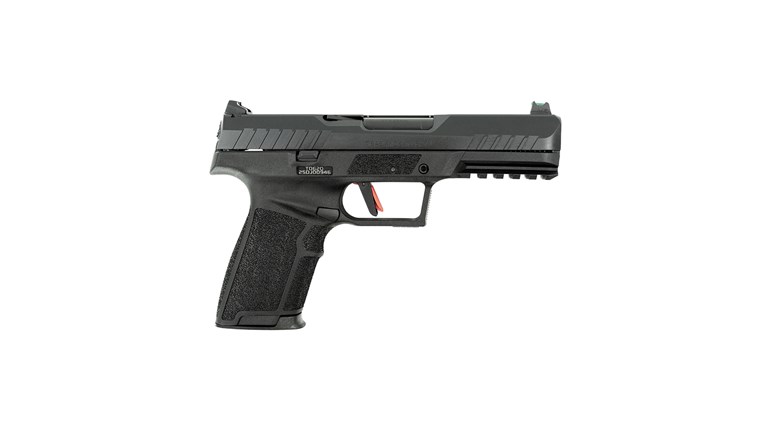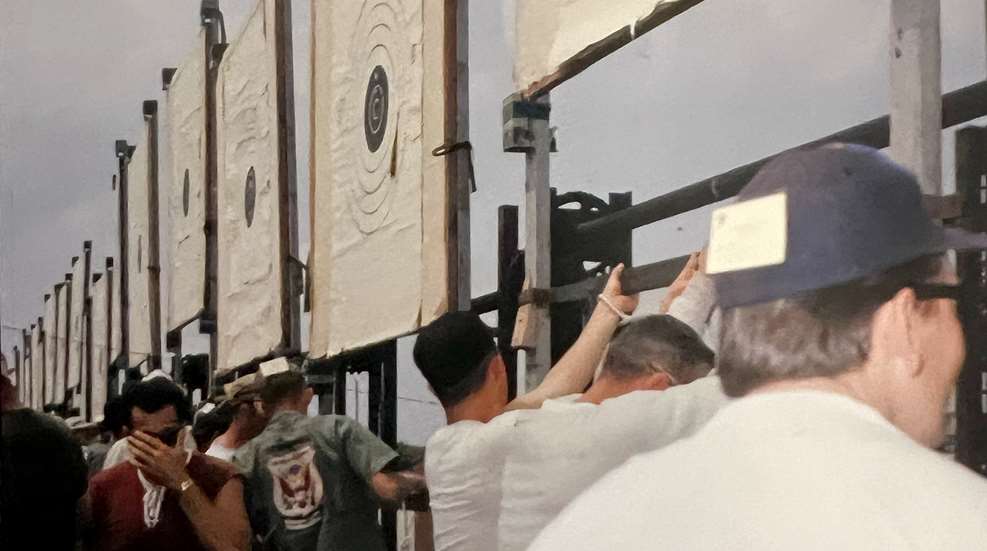
“… in the pro-defense environment of the Reagan administration, the once-doomed program is not only alive, but flourishing.”
—The Washington Post, October 1982
The year 1982 marked the 75th anniversary of the National Matches first being fired at Camp Perry and some of the more successful competitors in event history—Bonnie Harmon, Lones Wigger, Jr., Presley Kendall and Mid Tompkins—celebrated with national title performances.
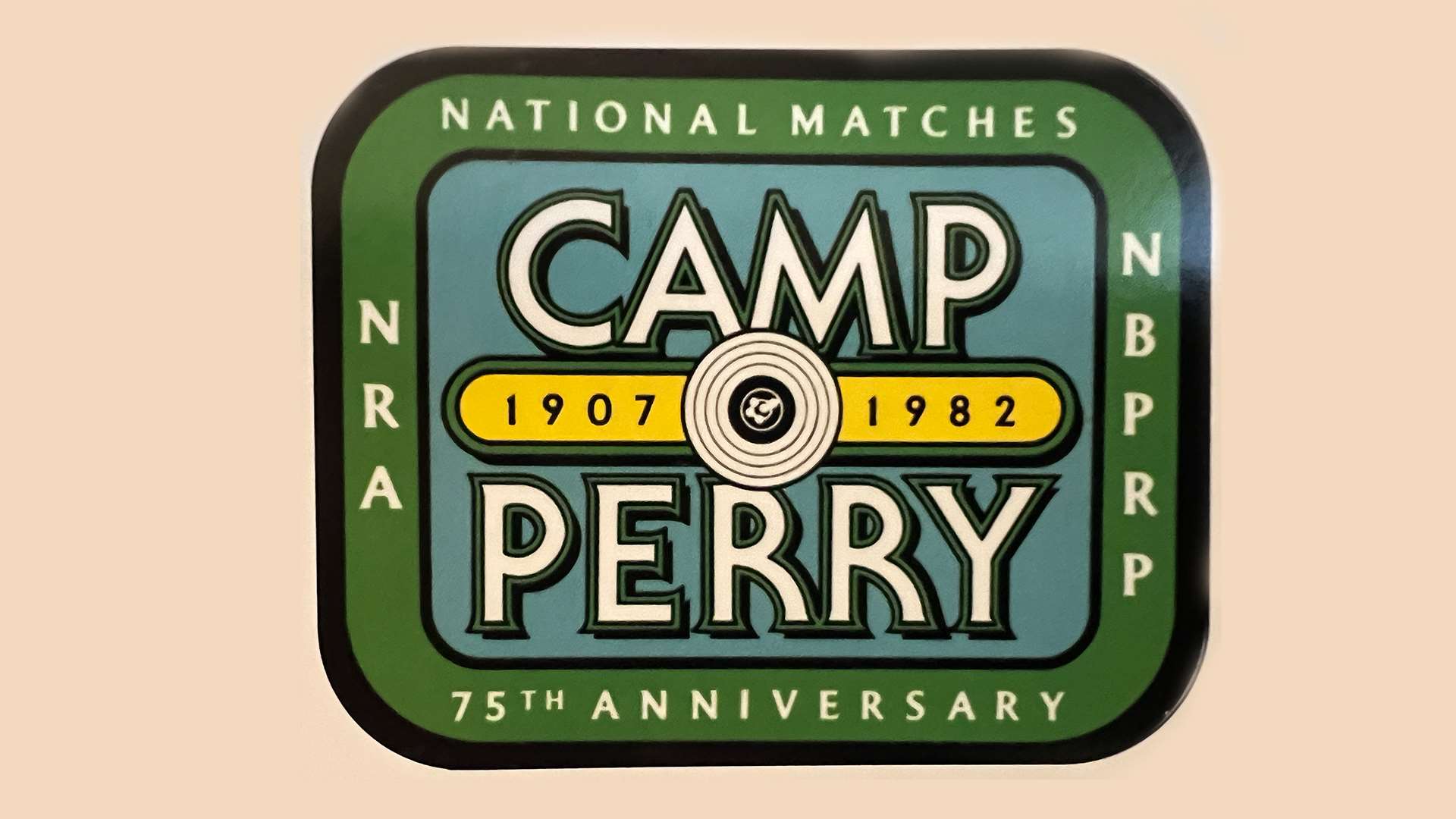
Before any rounds were fired, however, new procedural policies were enacted that testified to the ongoing evolution of the National Matches since the first Camp Perry program in 1907. At a conference in October 1981, a National Match Support Planning Guide was compiled that detailed the multitude of program responsibilities and included the most comprehensive association of military forces since the early 1960s. While military involvement as it was known before 1968 would never experience a full revival, part of the new set up included an expanded DCM office and the Army’s renewed commitment in the form of a 99-year lease of Camp Perry for the purpose of conducting the National Matches. Accordingly, the National Board updated its five-year budget plan to allow room for projected growth.
Growth was certainly a buzz word at Camp Perry as officials crunched the numbers for conducting 106 matches in addition to a variety of schools, camps and clinics over a one-month period for more than 3,000 competitors.
The first event of the 1982 program was the Police School, followed by the Small Arms Firing School for pistol. It was also the fourth consecutive year that muzzleloading matches, sanctioned by the National Muzzle Loading Rifle Association (NMLRA) and sponsored by the NRA Black Powder Committee with the help of the Toledo Muzzle Loaders Club, were fired. The black powder events coincided with the pistol warm-up matches and by the time record targets were hung for pistol competition; Bonnie Harmon was poised for a return to the national spotlight. Beginning with a second-place finish in .22 competition by one point to Roger Willis, Harmon stepped it up a notch and posted high scores with his Aimpoint-topped .45 to win both the Center Fire and .45 Championships on his way to an 18-point advantage and a fourth national title. Harmon, in his last year in the Army, won his previous three titles in 1972, 1975 and 1976.
Ruby Fox returned for a fourth consecutive women’s title, her fifth in seven years and John Farley assumed his position atop the police category for the fifth time. In the Board events, Marine Capt. Allan Bacon topped the President’s Hundred by fours Xs and his teammates won the National Trophy over 73 other squads but a Marine sweep was prevented when Master Sgt. Stan Ferreira of the Air National Guard captured National Trophy Individual honors. The Twining Trophy for the NRA Pistol Team Aggregate also went to Guardsmen.
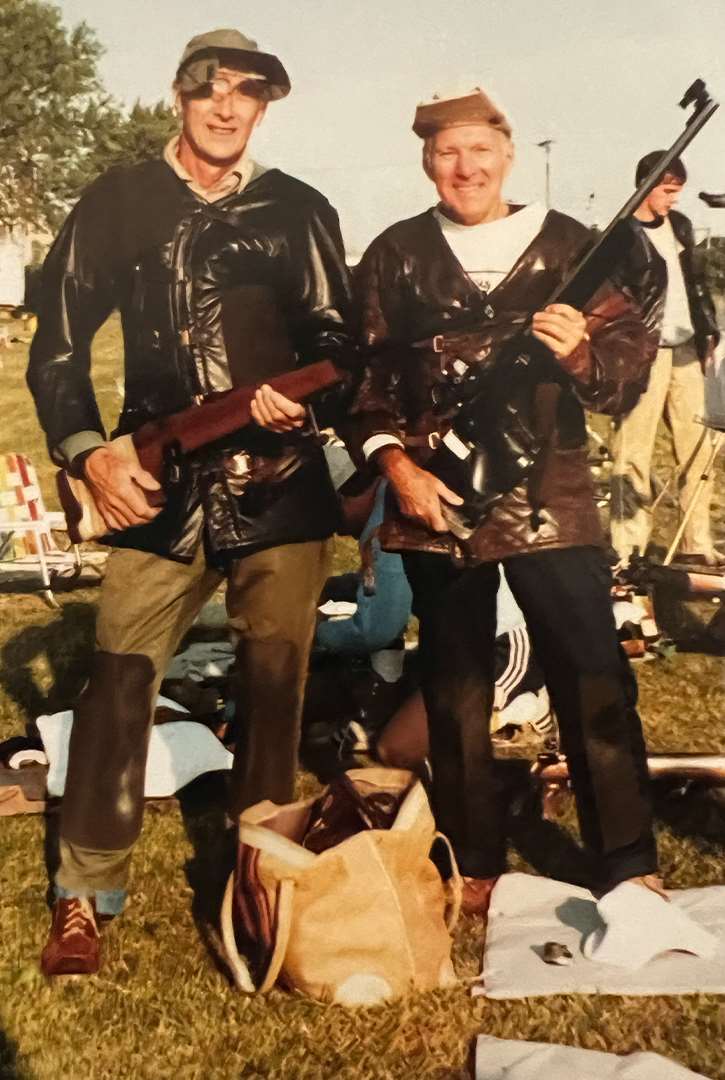
“There are few words left unwritten describing Wigger’s dominance in Camp Perry position shooting.”
—The American Rifleman, October 1982
There is no substitute for experience might well have been the official motto of the 1982 national smallbore championship as very few new names ended up being engraved upon the many celebrated trophies. The position matches were commandeered by none other than the giant of position shooting, Lones Wigger, Jr.
On his way to a 15th national position championship, Wigger won five of six fired matches. Carl Jooss denied Wigger the clean sweep when he won the prone any sight match in a tie break after both had tied the Perry record.
With one record-tying performance behind him, Wigger rose up and banged out a new record in standing with a 390x400. He finished the day with a 390 kneeling, four points below his record of 394. Wigger’s aggregate score for the day was an 1180, which eclipsed his record of 1174 established in 1978. Overall, Wigger produced a record 2316 for the win and Lance Peters, the All Guard standout who finished second by a staggering 23 points, could only shake his head in disbelief. When he last placed second to the champion it had been by 36 points in the rain-shortened 1980 matches.
Blue Trail Range’s Dave Lyman, youngest scion of the Lyman Gunsight family, repeated as civilian champion while Army Reserve Staff Sgt. Karen Monez picked up her second women’s position crown. Shannon Cherry topped the collegians; Mike Anti, son of Marine high power mainstay Ray Anti, led all juniors and Matt Suggs succeeded his twin brother Will as sub-junior champ.
In 1982, two decades since he won his first national prone title, Presley Kendall stood atop the winner’s podium for the fourth time. His 1600 on the first day of metallic sights put him out front to stay. Kendall ceded all individual matches to others but his consistent performance established a buffer against his challengers. A 400-30X on the final 100-yard metallic match was his only fired match win and it helped sew up the second day’s aggregate with a final score of 1598-119X. Winning both days gave him the metallic sight title by a comfortable six-point lead over runner-up Dave Weaver.
During the any-sight matches, Kendall simply held his own. Mary Stidworthy led a trio of 3198s while Kendall, who dropped a total of three, maintained his cushion from iron sight to claim the national title. Kendall’s 6395-528X was six better than Dave Weaver and Ron West, who finished second and third, respectively. Stidworthy finished nine back in her efforts to defend her title and claim a fourth national championship. Nevertheless, she posted two National Match firsts for prone competition—it was her seventh consecutive women’s title as well as her third collegiate title in as many years.
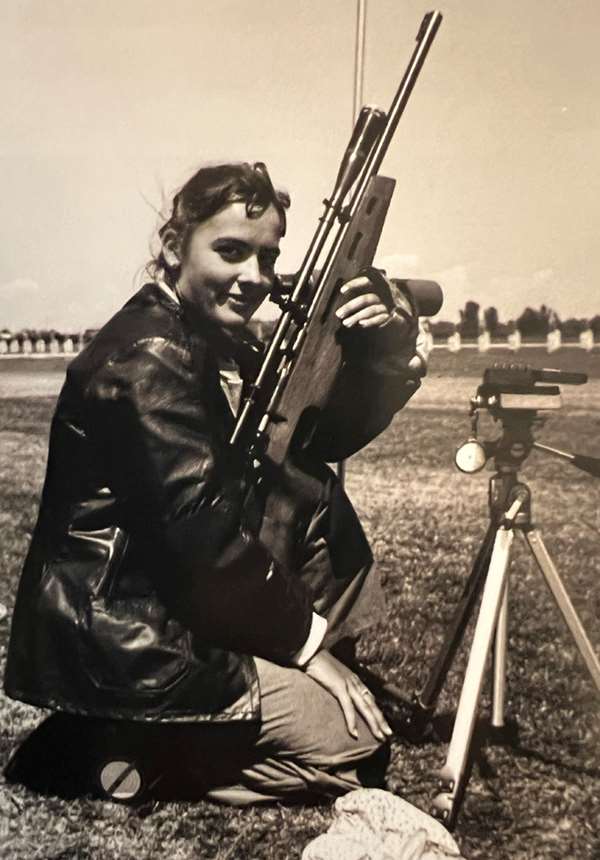
Once the matches ended, most shooters packed up and headed home, but not Wigger. A few weeks later he was back on the firing line shooting a center fire rifle at a target 1,000 yards away. He won his relay in the Wimbledon Cup Match and came away with a silver medal in the prestigious long-range event.
Defending Wimbledon winner Patrick McCann was the man who beat out Wigger for the coveted cup and in the process, captured the Canadian Cup for the Long-Range Championship that concluded the 1982 program. McCann’s collective score (839) in the Leech, Wimbledon and Palma Individual fell one point off the record set by Mid Tompkins the year before and true to the competitive nature of both McCann and Tompkins, the margin between them in the preceding high power championship proved to be even narrower.
McCann appeared on track to win his first national title after he claimed the first two legs of the high power championship, the Vandenberg and Nevada Trophy Matches, and entered the third up two and four points, respectively, over Carl Bernosky and Tompkins. Disaster struck however, when McCann had trouble in the last match of the Clarke Aggregate. Tompkins was the benefactor of the 10-point swing in the 600-yard Crowell Trophy Match and ended up winning the Clarke by four points over McCann to pull even in points at 2370. Both ended up with scores of 2370 but McCann’s title bid fell short by a single X. For Tompkins, who won his first national championship in 1958, it was his sixth title and first in 14 years.
The first event of the high power program, the Board-sponsored President’s Rifle Match, was won by Marine Col. Ken Erdman with a record score of 298-10X. Erdman went on to claim the 1982 service championship in the NRA matches, but first, there was a show of Army force in the remainder of the National Trophy events as Master Sgt. William Lee topped the National Individual Trophy Match and Army shooters claimed both National and Infantry Team honors.
“… the [high power] championships provided the suspense, the expectation and disappointment, and the surprise that a championship contest should provide. It was a good way to mark Camp Perry’s Diamond Jubilee.”
—The American Rifleman, October 1982
1982 National Matches Facts
This year Aimpoint really arrived. The Swedish-made illuminated optical sight was on hundreds of pistols at the Camp Perry firing line, including the guns of the National, Civilian, Police and Senior Champions.
This year the NRA Smallbore Committee considered reducing the prone course of fire from 6400 to 4800 by eliminating 50-yard firing.
This year marked the first time since 1967 that an Ammunition Section, provided by the Army, was included in the National Match appropriation. From 1968 until 1982, duties had been assumed by NRA employees.
This year’s printed program was the first to include a page dedicated to a segment (section 4312) of Title 10, U.S. Code, that pertained to the National Matches. As a follow up to recommendations made by Congress the year before, this year's proposal to Senate President George H. W. Bush to approve changes stated that the sections (4307-4313) relating to shooting and the National Matches contained “archaic language and outdated references and implications.”
One example of a soon-to-be enacted change was Section 4309: delete “all able-bodied males” and replace with “citizens of the United States.” Also, in April of the year, the Under Secretary of the Army informed the National Board that the “award of firearms at the National Matches … is suspended until Congress approves the proposed revisions to Title 10, United States Code, Sections 4307-4313.”





